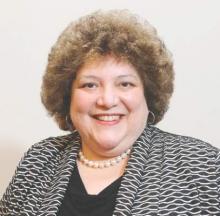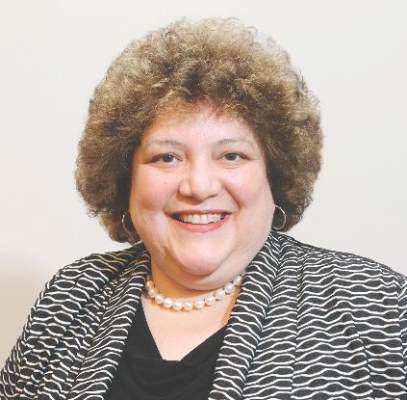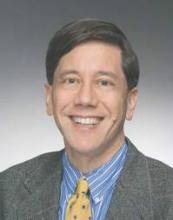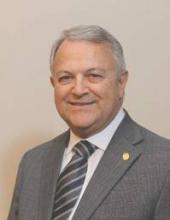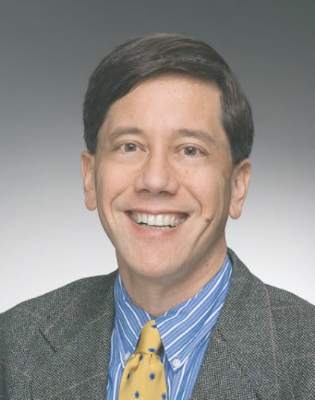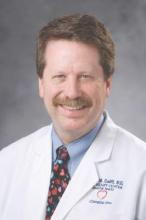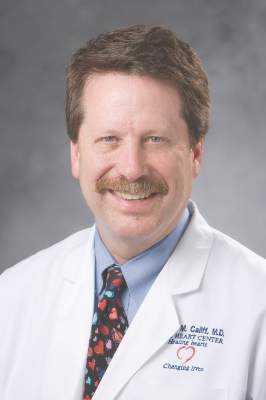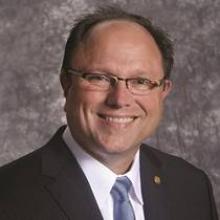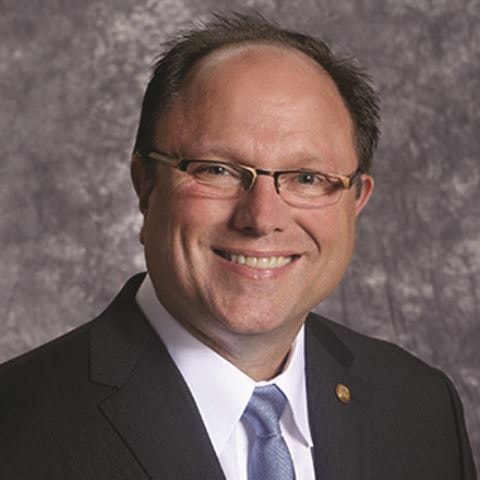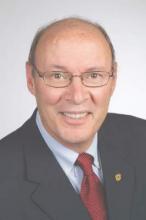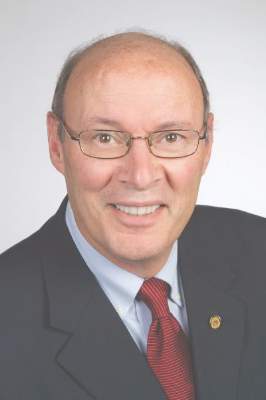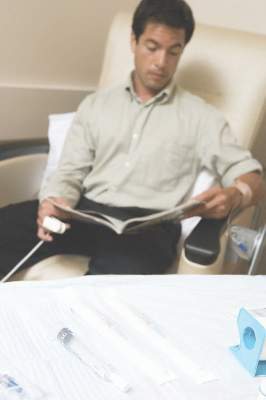User login
Planned Parenthood funding remains intact, attacks continue
Planned Parenthood Federation of America has survived the latest attempt to cut its federal funding, but the organization isn’t out of the woods yet.
On Sept. 30, the leadership of the House Energy and Commerce Committee and its Subcommittee on Health sent letters to Planned Parenthood Federation of America and seven of its affiliates, which supposedly conduct abortions and have fetal tissue donations programs, seeking information on their procedures and any independent audits that might have been conducted.
The letters went out as a majority of the House passed a bill to place a 1-year moratorium on funding for Planned Parenthood unless the organization certified that it would not perform abortions, with the exception of cases of rape or incest, or when the mother’s health is in danger. But the measure – which was separate from the must-pass continuing budget resolution – requires approval in the Senate, a prospect that seems unlikely since similar bills have failed in the Senate this year.
In the meantime, some Republican lawmakers are seeking to strip Planned Parenthood funds from the budget later this year through a procedure known as reconciliation. The House Energy and Commerce Committee took the first steps, sending a set of reconciliation instructions to the House Budget Committee calling for a prohibition on federal funding for organizations that primarily provide family planning services, but also offer abortions beyond cases involving rape or incest, or when there is a health risk to the mother.
While the instructions used broad language, Rep. Joe Barton (R-Tex.), chairman emeritus of the committee, acknowledged that the instructions would reprogram federal money to “other organizations that don’t conduct the practices that Planned Parenthood does.”
Democrats on the committee objected to the bill’s potential to cut women off from health services.
“Your intention is to terminate Planned Parenthood and any other provider that offers women access to comprehensive health care, including their right to an abortion,” said Rep. Frank Pallone Jr., (D-N.J.), ranking member of the committee. “There are not enough providers at community health centers with not enough hours in the day to add more than 4 million new patients, money or no money.”
All of this activity comes as members of the House Oversight and Government Reform Committee questioned Cecile Richards, president of Planned Parenthood Federation of America, about how the organization spends federal dollars.
“The question before us is does this organization, does Planned Parenthood, really need federal subsidy?” Rep. Jason Chaffetz (R-Utah), the committee chairman, said during the Sept. 29 hearing.
The committee released a memo detailing Planned Parenthood’s expenses and describing the organization as “self-sustaining” and not in need of federal funding. For instance, the memo notes that the organization reported $1.3 billion in revenue in 2014, 41% of which came from the government.
In addition, committee Republicans criticized the salaries of Ms. Richards and others at Planned Parenthood affiliates, noting that between 2009 and 2013, more than 40 people made more than $200,000 a year. “That’s money that isn’t going to women’s health care,” Rep. Chaffetz said.
When asked directly if Planned Parenthood could continue to operate without any federal money, Ms. Richards said that “we don’t make any profit off federal money,” but she was interrupted before she could clarify her remarks.
Planned Parenthood Federation of America has survived the latest attempt to cut its federal funding, but the organization isn’t out of the woods yet.
On Sept. 30, the leadership of the House Energy and Commerce Committee and its Subcommittee on Health sent letters to Planned Parenthood Federation of America and seven of its affiliates, which supposedly conduct abortions and have fetal tissue donations programs, seeking information on their procedures and any independent audits that might have been conducted.
The letters went out as a majority of the House passed a bill to place a 1-year moratorium on funding for Planned Parenthood unless the organization certified that it would not perform abortions, with the exception of cases of rape or incest, or when the mother’s health is in danger. But the measure – which was separate from the must-pass continuing budget resolution – requires approval in the Senate, a prospect that seems unlikely since similar bills have failed in the Senate this year.
In the meantime, some Republican lawmakers are seeking to strip Planned Parenthood funds from the budget later this year through a procedure known as reconciliation. The House Energy and Commerce Committee took the first steps, sending a set of reconciliation instructions to the House Budget Committee calling for a prohibition on federal funding for organizations that primarily provide family planning services, but also offer abortions beyond cases involving rape or incest, or when there is a health risk to the mother.
While the instructions used broad language, Rep. Joe Barton (R-Tex.), chairman emeritus of the committee, acknowledged that the instructions would reprogram federal money to “other organizations that don’t conduct the practices that Planned Parenthood does.”
Democrats on the committee objected to the bill’s potential to cut women off from health services.
“Your intention is to terminate Planned Parenthood and any other provider that offers women access to comprehensive health care, including their right to an abortion,” said Rep. Frank Pallone Jr., (D-N.J.), ranking member of the committee. “There are not enough providers at community health centers with not enough hours in the day to add more than 4 million new patients, money or no money.”
All of this activity comes as members of the House Oversight and Government Reform Committee questioned Cecile Richards, president of Planned Parenthood Federation of America, about how the organization spends federal dollars.
“The question before us is does this organization, does Planned Parenthood, really need federal subsidy?” Rep. Jason Chaffetz (R-Utah), the committee chairman, said during the Sept. 29 hearing.
The committee released a memo detailing Planned Parenthood’s expenses and describing the organization as “self-sustaining” and not in need of federal funding. For instance, the memo notes that the organization reported $1.3 billion in revenue in 2014, 41% of which came from the government.
In addition, committee Republicans criticized the salaries of Ms. Richards and others at Planned Parenthood affiliates, noting that between 2009 and 2013, more than 40 people made more than $200,000 a year. “That’s money that isn’t going to women’s health care,” Rep. Chaffetz said.
When asked directly if Planned Parenthood could continue to operate without any federal money, Ms. Richards said that “we don’t make any profit off federal money,” but she was interrupted before she could clarify her remarks.
Planned Parenthood Federation of America has survived the latest attempt to cut its federal funding, but the organization isn’t out of the woods yet.
On Sept. 30, the leadership of the House Energy and Commerce Committee and its Subcommittee on Health sent letters to Planned Parenthood Federation of America and seven of its affiliates, which supposedly conduct abortions and have fetal tissue donations programs, seeking information on their procedures and any independent audits that might have been conducted.
The letters went out as a majority of the House passed a bill to place a 1-year moratorium on funding for Planned Parenthood unless the organization certified that it would not perform abortions, with the exception of cases of rape or incest, or when the mother’s health is in danger. But the measure – which was separate from the must-pass continuing budget resolution – requires approval in the Senate, a prospect that seems unlikely since similar bills have failed in the Senate this year.
In the meantime, some Republican lawmakers are seeking to strip Planned Parenthood funds from the budget later this year through a procedure known as reconciliation. The House Energy and Commerce Committee took the first steps, sending a set of reconciliation instructions to the House Budget Committee calling for a prohibition on federal funding for organizations that primarily provide family planning services, but also offer abortions beyond cases involving rape or incest, or when there is a health risk to the mother.
While the instructions used broad language, Rep. Joe Barton (R-Tex.), chairman emeritus of the committee, acknowledged that the instructions would reprogram federal money to “other organizations that don’t conduct the practices that Planned Parenthood does.”
Democrats on the committee objected to the bill’s potential to cut women off from health services.
“Your intention is to terminate Planned Parenthood and any other provider that offers women access to comprehensive health care, including their right to an abortion,” said Rep. Frank Pallone Jr., (D-N.J.), ranking member of the committee. “There are not enough providers at community health centers with not enough hours in the day to add more than 4 million new patients, money or no money.”
All of this activity comes as members of the House Oversight and Government Reform Committee questioned Cecile Richards, president of Planned Parenthood Federation of America, about how the organization spends federal dollars.
“The question before us is does this organization, does Planned Parenthood, really need federal subsidy?” Rep. Jason Chaffetz (R-Utah), the committee chairman, said during the Sept. 29 hearing.
The committee released a memo detailing Planned Parenthood’s expenses and describing the organization as “self-sustaining” and not in need of federal funding. For instance, the memo notes that the organization reported $1.3 billion in revenue in 2014, 41% of which came from the government.
In addition, committee Republicans criticized the salaries of Ms. Richards and others at Planned Parenthood affiliates, noting that between 2009 and 2013, more than 40 people made more than $200,000 a year. “That’s money that isn’t going to women’s health care,” Rep. Chaffetz said.
When asked directly if Planned Parenthood could continue to operate without any federal money, Ms. Richards said that “we don’t make any profit off federal money,” but she was interrupted before she could clarify her remarks.
AGA proposes MOC overhaul
In an effort to create a more meaningful way for gastroenterologists to continue ongoing professional education, the American Gastroenterological Association is proposing an alternative to the American Board of Internal Medicine’s Maintenance of Certification program.
The alternative pathway, dubbed “G-APP” (Gastroenterologist: Accountable Professionalism in Practice), “represents individualized needs, supports lifelong learning and accountability, is based on performance levels using the EPA [Entrustable Professional Activities] framework [and] provides an adaptive learning module with reinforcement for competencies achieved and direction for continued learning where gaps are uncovered,” Dr. Suzanne Rose of the University of Connecticut in Farmington, and colleagues said in an article in the November issue of Gastroenterology (2015. doi: 10.1053/j.gastro.2015.08.009) and Clinical Gastroenterology and Hepatology outlining the proposal.
“The benefits of G-APP are many: it is personalized, flexible, includes learning as part of the assessment and is not high stakes,” the authors note. “The challenges will lie in building a framework for tracking and customizing a system for implementation and follow-up.”
G-APP is built upon three foundational concepts. The first is EPAs – the practice domains for gastroenterology and hepatology have already been outlined by the 13 existing EPAs – defined to describe the core activities of the profession to aid in assessment of trainees to meet Accreditation Council for Graduate Medical Education (ACGME) requirements.
Next is Individual Practice Divergence. After fellowship training, Dr. Rose and colleagues note that “most clinical practitioners diverge from a pattern of uniform exposure to, and depth of experience with, the full range of EPAs. They become more focused and selective in their practice domains across a narrower range of EPAs, according to their interests, abilities, and the needs of their practice environment.
Finally, Performance Levels, which are “reasonable parameters” that can be established for “assessment to be personalized to reflect a practitioner’s self-described competence within each of their domains of practice, termed a ‘Performance Level.’ ”
There are three Performance Levels for each EPA – Level 1 indicates a basic working knowledge with limits, under which a practitioner would know those limits and would appropriately identify and refer to someone with a higher level of expertise as needed. Level 2 indicates the ability to apply expertise to a competent level of general patient management. Level 3 indicates the ability to apply expertise to state-of-the-art management of complex issues.
Upon completion of initial training, all GI fellows should be at Level 2 for all 13 EPAs. To obtain recognition as a “competent gastroenterologist,” the practitioner must self-designate at least seven or more EPA practice domains at Level 2 with all remaining EPA practice domains at Level 1 (an option commonly associated with a general gastroenterology practice) or at least one or more EPAs at Level 3 with all remaining EPAs at either Level 1 or Level 2 (an option for subject matter clinical or research experts in a highly focused practice).
For Level 1 assessments, practitioners can use three different types of assessments: One being a low-stakes adaptive modular assessment taken at home and if competency is achieved, the level is complete; the second is point-of-care educational activities or completion of self-directed learning modules; and the third a series of assessments sent to the practitioner every 3 months to be completed within 3 months, with wrong answers prompting direction to learning modules that must be completed.
Assessments for Level 2 EPAs would entail adaptive, modular assessments at home and online, with ongoing testing until the practitioner demonstrates competency. Two EPAs – No. 6 (perform upper and lower endoscopic evaluation of the luminal gastrointestinal tract for screening, diagnosis, and intervention) and No. 7 (perform endoscopic procedures for the evaluation and management of gastrointestinal bleeding) - would require either a short answer examination or perhaps a peer observation skills-based assessment.
Level 3 assessments will require that the practitioner is an expert, with examples such as documentation to show that at least 75% of patients have a particular diagnosis. Testing may be short answer or in a different format and would be of greater difficulty and could encompass some degree of peer review examination. The authors note this will be “particularly rigorous, as the purpose of Performance Level 3 assessment is not to recognize special expertise for the general practitioner with areas of special interest, but rather to provide a fair assessment for those practitioners with practices limited to distinct areas of special expertise.”
G-APP also includes the creation of a Quality Improvement (QI) and Patient Safety Portal, with the stated goals being to “(1) promote the importance of QI and patient safety in a manner that recognizes QI efforts already in place, and (2) provide tools to enable those in need of QI initiatives to meet the requirements.”
AGA is endorsing the creation of a web-based educational platform that would train and certify individuals (physicians or administrators) as dedicated QI officers for their practice or group.
“We believe that G-APP provides a better pathway for continuous professional development while satisfying the goals of accountability and patient safety,” Dr. Rose and colleagues write. “We encourage discontinuation of the current MOC pathway in favor of this personalized and adaptive educational model.”
In an effort to create a more meaningful way for gastroenterologists to continue ongoing professional education, the American Gastroenterological Association is proposing an alternative to the American Board of Internal Medicine’s Maintenance of Certification program.
The alternative pathway, dubbed “G-APP” (Gastroenterologist: Accountable Professionalism in Practice), “represents individualized needs, supports lifelong learning and accountability, is based on performance levels using the EPA [Entrustable Professional Activities] framework [and] provides an adaptive learning module with reinforcement for competencies achieved and direction for continued learning where gaps are uncovered,” Dr. Suzanne Rose of the University of Connecticut in Farmington, and colleagues said in an article in the November issue of Gastroenterology (2015. doi: 10.1053/j.gastro.2015.08.009) and Clinical Gastroenterology and Hepatology outlining the proposal.
“The benefits of G-APP are many: it is personalized, flexible, includes learning as part of the assessment and is not high stakes,” the authors note. “The challenges will lie in building a framework for tracking and customizing a system for implementation and follow-up.”
G-APP is built upon three foundational concepts. The first is EPAs – the practice domains for gastroenterology and hepatology have already been outlined by the 13 existing EPAs – defined to describe the core activities of the profession to aid in assessment of trainees to meet Accreditation Council for Graduate Medical Education (ACGME) requirements.
Next is Individual Practice Divergence. After fellowship training, Dr. Rose and colleagues note that “most clinical practitioners diverge from a pattern of uniform exposure to, and depth of experience with, the full range of EPAs. They become more focused and selective in their practice domains across a narrower range of EPAs, according to their interests, abilities, and the needs of their practice environment.
Finally, Performance Levels, which are “reasonable parameters” that can be established for “assessment to be personalized to reflect a practitioner’s self-described competence within each of their domains of practice, termed a ‘Performance Level.’ ”
There are three Performance Levels for each EPA – Level 1 indicates a basic working knowledge with limits, under which a practitioner would know those limits and would appropriately identify and refer to someone with a higher level of expertise as needed. Level 2 indicates the ability to apply expertise to a competent level of general patient management. Level 3 indicates the ability to apply expertise to state-of-the-art management of complex issues.
Upon completion of initial training, all GI fellows should be at Level 2 for all 13 EPAs. To obtain recognition as a “competent gastroenterologist,” the practitioner must self-designate at least seven or more EPA practice domains at Level 2 with all remaining EPA practice domains at Level 1 (an option commonly associated with a general gastroenterology practice) or at least one or more EPAs at Level 3 with all remaining EPAs at either Level 1 or Level 2 (an option for subject matter clinical or research experts in a highly focused practice).
For Level 1 assessments, practitioners can use three different types of assessments: One being a low-stakes adaptive modular assessment taken at home and if competency is achieved, the level is complete; the second is point-of-care educational activities or completion of self-directed learning modules; and the third a series of assessments sent to the practitioner every 3 months to be completed within 3 months, with wrong answers prompting direction to learning modules that must be completed.
Assessments for Level 2 EPAs would entail adaptive, modular assessments at home and online, with ongoing testing until the practitioner demonstrates competency. Two EPAs – No. 6 (perform upper and lower endoscopic evaluation of the luminal gastrointestinal tract for screening, diagnosis, and intervention) and No. 7 (perform endoscopic procedures for the evaluation and management of gastrointestinal bleeding) - would require either a short answer examination or perhaps a peer observation skills-based assessment.
Level 3 assessments will require that the practitioner is an expert, with examples such as documentation to show that at least 75% of patients have a particular diagnosis. Testing may be short answer or in a different format and would be of greater difficulty and could encompass some degree of peer review examination. The authors note this will be “particularly rigorous, as the purpose of Performance Level 3 assessment is not to recognize special expertise for the general practitioner with areas of special interest, but rather to provide a fair assessment for those practitioners with practices limited to distinct areas of special expertise.”
G-APP also includes the creation of a Quality Improvement (QI) and Patient Safety Portal, with the stated goals being to “(1) promote the importance of QI and patient safety in a manner that recognizes QI efforts already in place, and (2) provide tools to enable those in need of QI initiatives to meet the requirements.”
AGA is endorsing the creation of a web-based educational platform that would train and certify individuals (physicians or administrators) as dedicated QI officers for their practice or group.
“We believe that G-APP provides a better pathway for continuous professional development while satisfying the goals of accountability and patient safety,” Dr. Rose and colleagues write. “We encourage discontinuation of the current MOC pathway in favor of this personalized and adaptive educational model.”
In an effort to create a more meaningful way for gastroenterologists to continue ongoing professional education, the American Gastroenterological Association is proposing an alternative to the American Board of Internal Medicine’s Maintenance of Certification program.
The alternative pathway, dubbed “G-APP” (Gastroenterologist: Accountable Professionalism in Practice), “represents individualized needs, supports lifelong learning and accountability, is based on performance levels using the EPA [Entrustable Professional Activities] framework [and] provides an adaptive learning module with reinforcement for competencies achieved and direction for continued learning where gaps are uncovered,” Dr. Suzanne Rose of the University of Connecticut in Farmington, and colleagues said in an article in the November issue of Gastroenterology (2015. doi: 10.1053/j.gastro.2015.08.009) and Clinical Gastroenterology and Hepatology outlining the proposal.
“The benefits of G-APP are many: it is personalized, flexible, includes learning as part of the assessment and is not high stakes,” the authors note. “The challenges will lie in building a framework for tracking and customizing a system for implementation and follow-up.”
G-APP is built upon three foundational concepts. The first is EPAs – the practice domains for gastroenterology and hepatology have already been outlined by the 13 existing EPAs – defined to describe the core activities of the profession to aid in assessment of trainees to meet Accreditation Council for Graduate Medical Education (ACGME) requirements.
Next is Individual Practice Divergence. After fellowship training, Dr. Rose and colleagues note that “most clinical practitioners diverge from a pattern of uniform exposure to, and depth of experience with, the full range of EPAs. They become more focused and selective in their practice domains across a narrower range of EPAs, according to their interests, abilities, and the needs of their practice environment.
Finally, Performance Levels, which are “reasonable parameters” that can be established for “assessment to be personalized to reflect a practitioner’s self-described competence within each of their domains of practice, termed a ‘Performance Level.’ ”
There are three Performance Levels for each EPA – Level 1 indicates a basic working knowledge with limits, under which a practitioner would know those limits and would appropriately identify and refer to someone with a higher level of expertise as needed. Level 2 indicates the ability to apply expertise to a competent level of general patient management. Level 3 indicates the ability to apply expertise to state-of-the-art management of complex issues.
Upon completion of initial training, all GI fellows should be at Level 2 for all 13 EPAs. To obtain recognition as a “competent gastroenterologist,” the practitioner must self-designate at least seven or more EPA practice domains at Level 2 with all remaining EPA practice domains at Level 1 (an option commonly associated with a general gastroenterology practice) or at least one or more EPAs at Level 3 with all remaining EPAs at either Level 1 or Level 2 (an option for subject matter clinical or research experts in a highly focused practice).
For Level 1 assessments, practitioners can use three different types of assessments: One being a low-stakes adaptive modular assessment taken at home and if competency is achieved, the level is complete; the second is point-of-care educational activities or completion of self-directed learning modules; and the third a series of assessments sent to the practitioner every 3 months to be completed within 3 months, with wrong answers prompting direction to learning modules that must be completed.
Assessments for Level 2 EPAs would entail adaptive, modular assessments at home and online, with ongoing testing until the practitioner demonstrates competency. Two EPAs – No. 6 (perform upper and lower endoscopic evaluation of the luminal gastrointestinal tract for screening, diagnosis, and intervention) and No. 7 (perform endoscopic procedures for the evaluation and management of gastrointestinal bleeding) - would require either a short answer examination or perhaps a peer observation skills-based assessment.
Level 3 assessments will require that the practitioner is an expert, with examples such as documentation to show that at least 75% of patients have a particular diagnosis. Testing may be short answer or in a different format and would be of greater difficulty and could encompass some degree of peer review examination. The authors note this will be “particularly rigorous, as the purpose of Performance Level 3 assessment is not to recognize special expertise for the general practitioner with areas of special interest, but rather to provide a fair assessment for those practitioners with practices limited to distinct areas of special expertise.”
G-APP also includes the creation of a Quality Improvement (QI) and Patient Safety Portal, with the stated goals being to “(1) promote the importance of QI and patient safety in a manner that recognizes QI efforts already in place, and (2) provide tools to enable those in need of QI initiatives to meet the requirements.”
AGA is endorsing the creation of a web-based educational platform that would train and certify individuals (physicians or administrators) as dedicated QI officers for their practice or group.
“We believe that G-APP provides a better pathway for continuous professional development while satisfying the goals of accountability and patient safety,” Dr. Rose and colleagues write. “We encourage discontinuation of the current MOC pathway in favor of this personalized and adaptive educational model.”
G-APP: A more meaningful pathway than MOC
In an effort to find a more meaningful way to keep gastroenterologists up to date on the latest medical knowledge and at the same time remove some of the high-stakes concerns surrounding Maintenance of Certification, the AGA is proposing a new alternative to MOC.
The pathway, labeled G-APP (the Gastroenterologist: Accountable Professionalism in Practice) is a platform on which AGA wants to work with ABIM and other specialty societies to improve the recertification process. G-APP focuses on a broad array of 13 entrustable professional activities (EPAs) that define the practice of gastroenterology and is designed to be customizable to meet the needs of everyone from the general gastroenterologist to someone more highly specialized in a specific facet of the practice.
But more importantly, the proposal recommends ABIM eliminate some of the emphasis on MOC that could be a stumbling point in practice.
“Overall, the proposed G-APP alternative pathway eliminates the high-stakes examination and replaces it with active and adaptive learning self-directed modules that allow for continuous feedback, and is based solidly on learning theory,” Dr. Timothy Wang, AGAF, AGA Institute president-elect, and Dr. Michael Camilleri, AGAF, AGA Institute president, said in an editorial in the November issue of Gastroenterology.
The high stakes of not meeting MOC requirements has become more of an issue of late. Changes to the MOC standards with failure to meet those standards now leading to physicians being publicly labeled as “not meeting MOC requirements” has become what the authors describe as “a watershed moment” for physician support of the MOC program in general.
“The view by many practicing gastroenterologists was that many of the MOC requirements did not help them become better doctors and represented unnecessary paperwork and study of material that was largely unrelated to the delivery of quality care in their clinical practice,” Dr. Wang and Dr. Camilleri write. “Many also resented the annual fees and what they deemed to be excessive cost for the entire process.”
They also noted the evolution of emphasis on maintaining MOC and its impact on the ability to practice.
“While board certification was initially designed as simply a mark of distinction, it has grown, in some instances, to be required for hospital privileges, and thus the recertification examination has evolved into a high-stakes assessment,” they continue, noting the relatively low pass rate of about 85% for GI Board recertification exams during the past 5 years. “The fact that board certification has become a requirement for privileges at many hospitals is surprising, given the lack of evidence that MOC has led to improved patient outcomes.”
Dr. Wang and Dr. Camilleri also note that MOC does not offer a continual learning environment.
“The AGA does not view as acceptable a high-stakes exam that allows a learner to miss a third of the questions on the exam, receive no feedback or knowledge acquisition, and still pass,” they write. “The best physicians will always be the ones that look up the information they do not know, and refer to another colleague when they are out of their depth.”
In view of all of these considerations and the ABIM’s invitation for suggestions to improve the process, the Governing Board convened the MOC Task Force at the AGA headquarters in Bethesda, Md., over the weekend of June 5-6, 2015, to conduct a scholarly review of educational principles and determine the ideal pathway for recertification of gastroenterologists. The G-APP pathway is the product of that Task Force.
Stated Dr. Camilleri, “Maintaining certification should be a process of active learning, not high-stakes testing. AGA supports continuous education and professional development that enhances patient care. We want to work with ABIM and other partners to improve the recertification process.”
In an effort to find a more meaningful way to keep gastroenterologists up to date on the latest medical knowledge and at the same time remove some of the high-stakes concerns surrounding Maintenance of Certification, the AGA is proposing a new alternative to MOC.
The pathway, labeled G-APP (the Gastroenterologist: Accountable Professionalism in Practice) is a platform on which AGA wants to work with ABIM and other specialty societies to improve the recertification process. G-APP focuses on a broad array of 13 entrustable professional activities (EPAs) that define the practice of gastroenterology and is designed to be customizable to meet the needs of everyone from the general gastroenterologist to someone more highly specialized in a specific facet of the practice.
But more importantly, the proposal recommends ABIM eliminate some of the emphasis on MOC that could be a stumbling point in practice.
“Overall, the proposed G-APP alternative pathway eliminates the high-stakes examination and replaces it with active and adaptive learning self-directed modules that allow for continuous feedback, and is based solidly on learning theory,” Dr. Timothy Wang, AGAF, AGA Institute president-elect, and Dr. Michael Camilleri, AGAF, AGA Institute president, said in an editorial in the November issue of Gastroenterology.
The high stakes of not meeting MOC requirements has become more of an issue of late. Changes to the MOC standards with failure to meet those standards now leading to physicians being publicly labeled as “not meeting MOC requirements” has become what the authors describe as “a watershed moment” for physician support of the MOC program in general.
“The view by many practicing gastroenterologists was that many of the MOC requirements did not help them become better doctors and represented unnecessary paperwork and study of material that was largely unrelated to the delivery of quality care in their clinical practice,” Dr. Wang and Dr. Camilleri write. “Many also resented the annual fees and what they deemed to be excessive cost for the entire process.”
They also noted the evolution of emphasis on maintaining MOC and its impact on the ability to practice.
“While board certification was initially designed as simply a mark of distinction, it has grown, in some instances, to be required for hospital privileges, and thus the recertification examination has evolved into a high-stakes assessment,” they continue, noting the relatively low pass rate of about 85% for GI Board recertification exams during the past 5 years. “The fact that board certification has become a requirement for privileges at many hospitals is surprising, given the lack of evidence that MOC has led to improved patient outcomes.”
Dr. Wang and Dr. Camilleri also note that MOC does not offer a continual learning environment.
“The AGA does not view as acceptable a high-stakes exam that allows a learner to miss a third of the questions on the exam, receive no feedback or knowledge acquisition, and still pass,” they write. “The best physicians will always be the ones that look up the information they do not know, and refer to another colleague when they are out of their depth.”
In view of all of these considerations and the ABIM’s invitation for suggestions to improve the process, the Governing Board convened the MOC Task Force at the AGA headquarters in Bethesda, Md., over the weekend of June 5-6, 2015, to conduct a scholarly review of educational principles and determine the ideal pathway for recertification of gastroenterologists. The G-APP pathway is the product of that Task Force.
Stated Dr. Camilleri, “Maintaining certification should be a process of active learning, not high-stakes testing. AGA supports continuous education and professional development that enhances patient care. We want to work with ABIM and other partners to improve the recertification process.”
In an effort to find a more meaningful way to keep gastroenterologists up to date on the latest medical knowledge and at the same time remove some of the high-stakes concerns surrounding Maintenance of Certification, the AGA is proposing a new alternative to MOC.
The pathway, labeled G-APP (the Gastroenterologist: Accountable Professionalism in Practice) is a platform on which AGA wants to work with ABIM and other specialty societies to improve the recertification process. G-APP focuses on a broad array of 13 entrustable professional activities (EPAs) that define the practice of gastroenterology and is designed to be customizable to meet the needs of everyone from the general gastroenterologist to someone more highly specialized in a specific facet of the practice.
But more importantly, the proposal recommends ABIM eliminate some of the emphasis on MOC that could be a stumbling point in practice.
“Overall, the proposed G-APP alternative pathway eliminates the high-stakes examination and replaces it with active and adaptive learning self-directed modules that allow for continuous feedback, and is based solidly on learning theory,” Dr. Timothy Wang, AGAF, AGA Institute president-elect, and Dr. Michael Camilleri, AGAF, AGA Institute president, said in an editorial in the November issue of Gastroenterology.
The high stakes of not meeting MOC requirements has become more of an issue of late. Changes to the MOC standards with failure to meet those standards now leading to physicians being publicly labeled as “not meeting MOC requirements” has become what the authors describe as “a watershed moment” for physician support of the MOC program in general.
“The view by many practicing gastroenterologists was that many of the MOC requirements did not help them become better doctors and represented unnecessary paperwork and study of material that was largely unrelated to the delivery of quality care in their clinical practice,” Dr. Wang and Dr. Camilleri write. “Many also resented the annual fees and what they deemed to be excessive cost for the entire process.”
They also noted the evolution of emphasis on maintaining MOC and its impact on the ability to practice.
“While board certification was initially designed as simply a mark of distinction, it has grown, in some instances, to be required for hospital privileges, and thus the recertification examination has evolved into a high-stakes assessment,” they continue, noting the relatively low pass rate of about 85% for GI Board recertification exams during the past 5 years. “The fact that board certification has become a requirement for privileges at many hospitals is surprising, given the lack of evidence that MOC has led to improved patient outcomes.”
Dr. Wang and Dr. Camilleri also note that MOC does not offer a continual learning environment.
“The AGA does not view as acceptable a high-stakes exam that allows a learner to miss a third of the questions on the exam, receive no feedback or knowledge acquisition, and still pass,” they write. “The best physicians will always be the ones that look up the information they do not know, and refer to another colleague when they are out of their depth.”
In view of all of these considerations and the ABIM’s invitation for suggestions to improve the process, the Governing Board convened the MOC Task Force at the AGA headquarters in Bethesda, Md., over the weekend of June 5-6, 2015, to conduct a scholarly review of educational principles and determine the ideal pathway for recertification of gastroenterologists. The G-APP pathway is the product of that Task Force.
Stated Dr. Camilleri, “Maintaining certification should be a process of active learning, not high-stakes testing. AGA supports continuous education and professional development that enhances patient care. We want to work with ABIM and other partners to improve the recertification process.”
CMS to test new Part D medication therapy management model
In an effort to help improve adherence, a Medicare test program aims to get prescribers more involved in enhanced medication therapy management (MTM).
“Existing incentives [under Medicare Part D] may not be well aligned with the Medicare program’s interests in robust quality improvement,” according to an announcement from the Centers for Medicare & Medicaid Services on the Part D Enhanced Medication Therapy Management Model Test.
The new program – to be tested in 11 states – offers Part D insurance plans more flexibility in how plans spend their resources, allowing them to use different kinds of interventions that are risk stratified, based on likelihood of medication adherence issues a plan member might have, according to the announcement.
CMS is recommending that Part D insurers reach out to prescribers and will help them identify at-risk patients, allowing them to order medication histories in advance of appointments and enable them to write orders for pharmacist consults directly from a standard list of services within an electronic medical record system. Among the quality measures plans will be tracked on are whether the prescriber goals of therapy have been achieved.
CMS said this test “will be complementary to [accountable care organizations] provider-based clinical management, and the combination of the two models will be mutually reinforcing.” Part D insurers and MTM subcontractors “may involve prescribers and treating physicians in the MTM referral and consultation process, and may establish processes for the electronic exchange of interoperable MTM documentation that integrate conveniently into prescriber work flows.”
Prescribers, however, will not receive additional compensation for this interaction.
CMS plans to begin testing the models at the beginning of 2017 for 5 years.
In an effort to help improve adherence, a Medicare test program aims to get prescribers more involved in enhanced medication therapy management (MTM).
“Existing incentives [under Medicare Part D] may not be well aligned with the Medicare program’s interests in robust quality improvement,” according to an announcement from the Centers for Medicare & Medicaid Services on the Part D Enhanced Medication Therapy Management Model Test.
The new program – to be tested in 11 states – offers Part D insurance plans more flexibility in how plans spend their resources, allowing them to use different kinds of interventions that are risk stratified, based on likelihood of medication adherence issues a plan member might have, according to the announcement.
CMS is recommending that Part D insurers reach out to prescribers and will help them identify at-risk patients, allowing them to order medication histories in advance of appointments and enable them to write orders for pharmacist consults directly from a standard list of services within an electronic medical record system. Among the quality measures plans will be tracked on are whether the prescriber goals of therapy have been achieved.
CMS said this test “will be complementary to [accountable care organizations] provider-based clinical management, and the combination of the two models will be mutually reinforcing.” Part D insurers and MTM subcontractors “may involve prescribers and treating physicians in the MTM referral and consultation process, and may establish processes for the electronic exchange of interoperable MTM documentation that integrate conveniently into prescriber work flows.”
Prescribers, however, will not receive additional compensation for this interaction.
CMS plans to begin testing the models at the beginning of 2017 for 5 years.
In an effort to help improve adherence, a Medicare test program aims to get prescribers more involved in enhanced medication therapy management (MTM).
“Existing incentives [under Medicare Part D] may not be well aligned with the Medicare program’s interests in robust quality improvement,” according to an announcement from the Centers for Medicare & Medicaid Services on the Part D Enhanced Medication Therapy Management Model Test.
The new program – to be tested in 11 states – offers Part D insurance plans more flexibility in how plans spend their resources, allowing them to use different kinds of interventions that are risk stratified, based on likelihood of medication adherence issues a plan member might have, according to the announcement.
CMS is recommending that Part D insurers reach out to prescribers and will help them identify at-risk patients, allowing them to order medication histories in advance of appointments and enable them to write orders for pharmacist consults directly from a standard list of services within an electronic medical record system. Among the quality measures plans will be tracked on are whether the prescriber goals of therapy have been achieved.
CMS said this test “will be complementary to [accountable care organizations] provider-based clinical management, and the combination of the two models will be mutually reinforcing.” Part D insurers and MTM subcontractors “may involve prescribers and treating physicians in the MTM referral and consultation process, and may establish processes for the electronic exchange of interoperable MTM documentation that integrate conveniently into prescriber work flows.”
Prescribers, however, will not receive additional compensation for this interaction.
CMS plans to begin testing the models at the beginning of 2017 for 5 years.
FDA to include patient opinions in device regulation
Patients will now be a part of device regulation, offering advice on a wide variety of issues.
The Food and Drug Administration has created the Patient Engagement Advisory Committee (PEAC), which will “provide advice to the FDA commissioner on a range of complex issues relating to medical devices, and their use by patients,” according to a Sept. 18 blog post on the FDA website by Nina Hunter, Ph.D., a regulatory scientist in the FDA’s Center for Devices and Radiological Health, and Dr. Robert M. Califf, deputy commissioner for medical products and tobacco, and nominee to take over the agency as commissioner.
“Some questions that the PEAC may discuss include where and how best to engage patients across the device development and assessment life cycle as well as how FDA and sponsors should communicate patient preference information to patients,” Dr. Hunter and Dr. Califf wrote.
According to FDA, topics that the committee could consider include agency guidance and policies, clinical trial or registry design, patient preference study design, benefit-risk determinations, device labeling, unmet clinical need, available alternatives, patient-reported outcomes, and device-related quality of life or health state issues, or other related topics.
The committee will consist of nine voting members who are knowledgeable in areas such as clinical research, primary care patient experience, and health care needs of patient groups in the United States, as well as one consumer representative. Nonvoting members representing industry can be added as subject matter warrants.
Dr. Hunter and Dr. Califf were clear that the patient preference information “will not be used to justify approval of unsafe or ineffective devices,” but when the agency is assessing a device for approval, “FDA may consider rigorous, systematically gathered patient preference information as part of the totality of the evidence from clinical and nonclinical testing.
Patients will now be a part of device regulation, offering advice on a wide variety of issues.
The Food and Drug Administration has created the Patient Engagement Advisory Committee (PEAC), which will “provide advice to the FDA commissioner on a range of complex issues relating to medical devices, and their use by patients,” according to a Sept. 18 blog post on the FDA website by Nina Hunter, Ph.D., a regulatory scientist in the FDA’s Center for Devices and Radiological Health, and Dr. Robert M. Califf, deputy commissioner for medical products and tobacco, and nominee to take over the agency as commissioner.
“Some questions that the PEAC may discuss include where and how best to engage patients across the device development and assessment life cycle as well as how FDA and sponsors should communicate patient preference information to patients,” Dr. Hunter and Dr. Califf wrote.
According to FDA, topics that the committee could consider include agency guidance and policies, clinical trial or registry design, patient preference study design, benefit-risk determinations, device labeling, unmet clinical need, available alternatives, patient-reported outcomes, and device-related quality of life or health state issues, or other related topics.
The committee will consist of nine voting members who are knowledgeable in areas such as clinical research, primary care patient experience, and health care needs of patient groups in the United States, as well as one consumer representative. Nonvoting members representing industry can be added as subject matter warrants.
Dr. Hunter and Dr. Califf were clear that the patient preference information “will not be used to justify approval of unsafe or ineffective devices,” but when the agency is assessing a device for approval, “FDA may consider rigorous, systematically gathered patient preference information as part of the totality of the evidence from clinical and nonclinical testing.
Patients will now be a part of device regulation, offering advice on a wide variety of issues.
The Food and Drug Administration has created the Patient Engagement Advisory Committee (PEAC), which will “provide advice to the FDA commissioner on a range of complex issues relating to medical devices, and their use by patients,” according to a Sept. 18 blog post on the FDA website by Nina Hunter, Ph.D., a regulatory scientist in the FDA’s Center for Devices and Radiological Health, and Dr. Robert M. Califf, deputy commissioner for medical products and tobacco, and nominee to take over the agency as commissioner.
“Some questions that the PEAC may discuss include where and how best to engage patients across the device development and assessment life cycle as well as how FDA and sponsors should communicate patient preference information to patients,” Dr. Hunter and Dr. Califf wrote.
According to FDA, topics that the committee could consider include agency guidance and policies, clinical trial or registry design, patient preference study design, benefit-risk determinations, device labeling, unmet clinical need, available alternatives, patient-reported outcomes, and device-related quality of life or health state issues, or other related topics.
The committee will consist of nine voting members who are knowledgeable in areas such as clinical research, primary care patient experience, and health care needs of patient groups in the United States, as well as one consumer representative. Nonvoting members representing industry can be added as subject matter warrants.
Dr. Hunter and Dr. Califf were clear that the patient preference information “will not be used to justify approval of unsafe or ineffective devices,” but when the agency is assessing a device for approval, “FDA may consider rigorous, systematically gathered patient preference information as part of the totality of the evidence from clinical and nonclinical testing.
Family medicine residents thinking temporary assignments, part-time work
Family medicine residents are beginning to consider temporary assignments and more part-time work at the onset of their medical career after graduation, a new survey from Staff Care suggests.
A majority (87%) reported being either “very open” or “somewhat open” to test driving various practice styles and geographic locations by working temporary assignments post residency. Additionally, 15% said that they preferred their first job after residency to be part-time (defined as 30 hour a week or less). The survey of 133 residents was conducted at the 2015 American Academy of Family Physicians (AAFP) Conference for Family Medicine Residents and Medical Students in Kansas City.
One additional point that stood out from the survey is a preference for locum tenens positions. Even though such placeholder positions are not usually available to residents, they ranked sixth as the preferred setting for practice among the surveyed population.
Sean Ebner, president of Staff Care, a temporary physician and advanced practitioner consulting firm located in Dallas, said the findings are all related, as residents are looking at more flexibility in their career choices.
The higher ranking of locum tenens “speaks to [the preference for] flexibility around temporary engagements to work in a variety of settings, a variety of geographies, before immediately settling down,” Mr. Ebner said in an interview.
Perhaps residents are put off by the changing nature of the dynamics of the business side of medical practice. There seems to be an ongoing shift from independent, solo, and small group practices to a growing number of physicians being employed in larger group settings. Such a change brings with it different workforce strategy. Younger physicians are able to consider part-time employment and work-life balance. These conditions lend themselves to more locum tenens capacity.
“A lot of residents are looking at it as a career option,” Mr. Ebner said.
He also said that these considerations are reflective of the financial compensation that residents are seeking.
According to the survey, half are expecting an annual salary in their first job post residency to be $100,000 or less. Thirty-six percent are expecting $101,000-$150,000, while 10% are expecting $151,000-$200,000 and 4% are expecting more than $200,000.
“We’re taking from this that physicians are already baking into their compensation expectations flexibility, diversity of work, those types of things, particularly among women,” who were 65% of the survey respondents, Mr. Ebner said. Women make up the majority of residency programs (AAFP statistics show that 55% of residents in 2015 were women) “and they’re looking at much higher levels” of managing their careers to move to a part-time status at some point, if not right up front, he added.
The other key point Mr. Ebner wanted to stress was that, of the surveyed population, only 4% of those who are finishing their residency in 2016 have accepted a job offer, 20% have interviewed but not accepted a position yet, 57% considered offers but have not been interviewed, and 19% have put little to no time into considering job offers. For all those who were surveyed, 50% said they have put little to no time into considering job offers.
“The knowledge that half of our population sampled are still up for grabs might catch people by surprise, especially at this time in the cycle,” Mr. Ebner said. “It may be that hospitals and firms and groups are anticipating that the population is spoken for, so one of the things that we are taking away from this is that the population in their final residency is still very focused on the core content of their residency and have pushed off or delayed the career elements of post graduation.”
AAFP President Dr. Robert Wergin noted that, while the results were interesting, the low participation provides more of “snapshot” rather than something indicative of any trends. Mr. Ebner did acknowledge the small sample size but believed the results were informative even if they were not statistically significant.
Dr. Wergin also said in an interview that the results were inconsistent with data the AAFP tracks and suggested that the small sample size could be biasing the results.
“When they said these docs would be willing to look into practicing far away or different locums or had an interest in that, we have data that will show over half, 56% of residents, practice within 100 miles of where they train,” said Dr. Wergin of Milford, Neb. “About 40% practice within 25 miles and 20% practice within 5 miles. So where you train … is predictive of where you may end up, certainly at least post graduation.”
And he added that a fundamental principle of family medicine that is a part of training, continuity of care, appears to be inconsistent with the Staff Care findings.
“Our tracking and our experiences [suggest that] our people are looking for a place where they want to practice for a period of time, and that is consistent with what family medicine and your training is all about,” Dr. Wergin said. “If you look at the core principles of family medicine, even in training they track continuity of care, so [during] the 3-year track, they want those in residency to follow [patients] through the whole 3 years.
Dr. Wergin also suggested that the timing of the survey may have led to the numbers regarding lack of commitments in terms of careers post graduation, as it was taken when third-year residents are typically just beginning the process of considering postgraduation opportunities.
Family medicine residents are beginning to consider temporary assignments and more part-time work at the onset of their medical career after graduation, a new survey from Staff Care suggests.
A majority (87%) reported being either “very open” or “somewhat open” to test driving various practice styles and geographic locations by working temporary assignments post residency. Additionally, 15% said that they preferred their first job after residency to be part-time (defined as 30 hour a week or less). The survey of 133 residents was conducted at the 2015 American Academy of Family Physicians (AAFP) Conference for Family Medicine Residents and Medical Students in Kansas City.
One additional point that stood out from the survey is a preference for locum tenens positions. Even though such placeholder positions are not usually available to residents, they ranked sixth as the preferred setting for practice among the surveyed population.
Sean Ebner, president of Staff Care, a temporary physician and advanced practitioner consulting firm located in Dallas, said the findings are all related, as residents are looking at more flexibility in their career choices.
The higher ranking of locum tenens “speaks to [the preference for] flexibility around temporary engagements to work in a variety of settings, a variety of geographies, before immediately settling down,” Mr. Ebner said in an interview.
Perhaps residents are put off by the changing nature of the dynamics of the business side of medical practice. There seems to be an ongoing shift from independent, solo, and small group practices to a growing number of physicians being employed in larger group settings. Such a change brings with it different workforce strategy. Younger physicians are able to consider part-time employment and work-life balance. These conditions lend themselves to more locum tenens capacity.
“A lot of residents are looking at it as a career option,” Mr. Ebner said.
He also said that these considerations are reflective of the financial compensation that residents are seeking.
According to the survey, half are expecting an annual salary in their first job post residency to be $100,000 or less. Thirty-six percent are expecting $101,000-$150,000, while 10% are expecting $151,000-$200,000 and 4% are expecting more than $200,000.
“We’re taking from this that physicians are already baking into their compensation expectations flexibility, diversity of work, those types of things, particularly among women,” who were 65% of the survey respondents, Mr. Ebner said. Women make up the majority of residency programs (AAFP statistics show that 55% of residents in 2015 were women) “and they’re looking at much higher levels” of managing their careers to move to a part-time status at some point, if not right up front, he added.
The other key point Mr. Ebner wanted to stress was that, of the surveyed population, only 4% of those who are finishing their residency in 2016 have accepted a job offer, 20% have interviewed but not accepted a position yet, 57% considered offers but have not been interviewed, and 19% have put little to no time into considering job offers. For all those who were surveyed, 50% said they have put little to no time into considering job offers.
“The knowledge that half of our population sampled are still up for grabs might catch people by surprise, especially at this time in the cycle,” Mr. Ebner said. “It may be that hospitals and firms and groups are anticipating that the population is spoken for, so one of the things that we are taking away from this is that the population in their final residency is still very focused on the core content of their residency and have pushed off or delayed the career elements of post graduation.”
AAFP President Dr. Robert Wergin noted that, while the results were interesting, the low participation provides more of “snapshot” rather than something indicative of any trends. Mr. Ebner did acknowledge the small sample size but believed the results were informative even if they were not statistically significant.
Dr. Wergin also said in an interview that the results were inconsistent with data the AAFP tracks and suggested that the small sample size could be biasing the results.
“When they said these docs would be willing to look into practicing far away or different locums or had an interest in that, we have data that will show over half, 56% of residents, practice within 100 miles of where they train,” said Dr. Wergin of Milford, Neb. “About 40% practice within 25 miles and 20% practice within 5 miles. So where you train … is predictive of where you may end up, certainly at least post graduation.”
And he added that a fundamental principle of family medicine that is a part of training, continuity of care, appears to be inconsistent with the Staff Care findings.
“Our tracking and our experiences [suggest that] our people are looking for a place where they want to practice for a period of time, and that is consistent with what family medicine and your training is all about,” Dr. Wergin said. “If you look at the core principles of family medicine, even in training they track continuity of care, so [during] the 3-year track, they want those in residency to follow [patients] through the whole 3 years.
Dr. Wergin also suggested that the timing of the survey may have led to the numbers regarding lack of commitments in terms of careers post graduation, as it was taken when third-year residents are typically just beginning the process of considering postgraduation opportunities.
Family medicine residents are beginning to consider temporary assignments and more part-time work at the onset of their medical career after graduation, a new survey from Staff Care suggests.
A majority (87%) reported being either “very open” or “somewhat open” to test driving various practice styles and geographic locations by working temporary assignments post residency. Additionally, 15% said that they preferred their first job after residency to be part-time (defined as 30 hour a week or less). The survey of 133 residents was conducted at the 2015 American Academy of Family Physicians (AAFP) Conference for Family Medicine Residents and Medical Students in Kansas City.
One additional point that stood out from the survey is a preference for locum tenens positions. Even though such placeholder positions are not usually available to residents, they ranked sixth as the preferred setting for practice among the surveyed population.
Sean Ebner, president of Staff Care, a temporary physician and advanced practitioner consulting firm located in Dallas, said the findings are all related, as residents are looking at more flexibility in their career choices.
The higher ranking of locum tenens “speaks to [the preference for] flexibility around temporary engagements to work in a variety of settings, a variety of geographies, before immediately settling down,” Mr. Ebner said in an interview.
Perhaps residents are put off by the changing nature of the dynamics of the business side of medical practice. There seems to be an ongoing shift from independent, solo, and small group practices to a growing number of physicians being employed in larger group settings. Such a change brings with it different workforce strategy. Younger physicians are able to consider part-time employment and work-life balance. These conditions lend themselves to more locum tenens capacity.
“A lot of residents are looking at it as a career option,” Mr. Ebner said.
He also said that these considerations are reflective of the financial compensation that residents are seeking.
According to the survey, half are expecting an annual salary in their first job post residency to be $100,000 or less. Thirty-six percent are expecting $101,000-$150,000, while 10% are expecting $151,000-$200,000 and 4% are expecting more than $200,000.
“We’re taking from this that physicians are already baking into their compensation expectations flexibility, diversity of work, those types of things, particularly among women,” who were 65% of the survey respondents, Mr. Ebner said. Women make up the majority of residency programs (AAFP statistics show that 55% of residents in 2015 were women) “and they’re looking at much higher levels” of managing their careers to move to a part-time status at some point, if not right up front, he added.
The other key point Mr. Ebner wanted to stress was that, of the surveyed population, only 4% of those who are finishing their residency in 2016 have accepted a job offer, 20% have interviewed but not accepted a position yet, 57% considered offers but have not been interviewed, and 19% have put little to no time into considering job offers. For all those who were surveyed, 50% said they have put little to no time into considering job offers.
“The knowledge that half of our population sampled are still up for grabs might catch people by surprise, especially at this time in the cycle,” Mr. Ebner said. “It may be that hospitals and firms and groups are anticipating that the population is spoken for, so one of the things that we are taking away from this is that the population in their final residency is still very focused on the core content of their residency and have pushed off or delayed the career elements of post graduation.”
AAFP President Dr. Robert Wergin noted that, while the results were interesting, the low participation provides more of “snapshot” rather than something indicative of any trends. Mr. Ebner did acknowledge the small sample size but believed the results were informative even if they were not statistically significant.
Dr. Wergin also said in an interview that the results were inconsistent with data the AAFP tracks and suggested that the small sample size could be biasing the results.
“When they said these docs would be willing to look into practicing far away or different locums or had an interest in that, we have data that will show over half, 56% of residents, practice within 100 miles of where they train,” said Dr. Wergin of Milford, Neb. “About 40% practice within 25 miles and 20% practice within 5 miles. So where you train … is predictive of where you may end up, certainly at least post graduation.”
And he added that a fundamental principle of family medicine that is a part of training, continuity of care, appears to be inconsistent with the Staff Care findings.
“Our tracking and our experiences [suggest that] our people are looking for a place where they want to practice for a period of time, and that is consistent with what family medicine and your training is all about,” Dr. Wergin said. “If you look at the core principles of family medicine, even in training they track continuity of care, so [during] the 3-year track, they want those in residency to follow [patients] through the whole 3 years.
Dr. Wergin also suggested that the timing of the survey may have led to the numbers regarding lack of commitments in terms of careers post graduation, as it was taken when third-year residents are typically just beginning the process of considering postgraduation opportunities.
Get ready for a value-based world now, expert advises
Start thinking now about how your practice will change when value-based reimbursement becomes the norm, Dr. Madelaine Feldman advised at the annual Perspectives in Rheumatic Diseases.
It’s important “to have an idea of a pathway that they’d like to go down 4 or 5 years from now, and preparations need to be made,” Dr. Feldman of the department of medicine at Tulane University, New Orleans, said in an interview. Dr. Feldman also serves on the board of directors of the Coalition of State Rheumatology Organizations.
And she stressed that this is not going to be just a government thing.
Some doctors seem to think, “Well, maybe I will just opt out of Medicare and everything will be fine.” That won’t be workable, she predicted. “The private payers are all going to be value-based as well.”
But for now, little information is available on how the alternative payment models will work and whether following that or building off the federal government’s Merit-Based Incentive Payment System program will be the way to go.
“We don’t have any definitive answers or a real clear pathway for physicians. Most are just ... trying to make Stage 2 of Meaningful Use [work] and all of this is getting thrown at them,” Dr. Feldman said at the conference, held by Global Academy for Medical Education. Global Academy for Medical Education and this news organization are owned by the same parent company.
However, one thing is clear: Cost “is going to be so important in terms of your reimbursement,” and that is something she said doctors should start thinking about now.
“High resource utilizers are going to get penalized, and I think that’s something that probably hasn’t sunk in to a lot of physicians’ mindsets,” she said.
In particular, utilization of drugs under Part B versus Part D may become an issue, Dr. Feldman said, because the Centers for Medicare & Medicaid Services currently ties Part B prescribing to the individual prescriber; it does not do the same for Part D.
“For rheumatologists, this is a huge issue because all of the drugs cost a lot of money. If you infuse in your office, you are going to be dinged [as a high resource utilizer] because those are [paid for by] Part B,” Dr. Feldman said. “If you send [patients] to an outlying infusion center, you probably won’t get dinged for it. But if you prescribe self-injectables, the cost is going to be just as high but you won’t get dinged for it because it is Part D.”
She noted that could change in the future as regulations for value-based payments begin to take shape.
Dr. Feldman reported no relevant conflicts of interest.
Start thinking now about how your practice will change when value-based reimbursement becomes the norm, Dr. Madelaine Feldman advised at the annual Perspectives in Rheumatic Diseases.
It’s important “to have an idea of a pathway that they’d like to go down 4 or 5 years from now, and preparations need to be made,” Dr. Feldman of the department of medicine at Tulane University, New Orleans, said in an interview. Dr. Feldman also serves on the board of directors of the Coalition of State Rheumatology Organizations.
And she stressed that this is not going to be just a government thing.
Some doctors seem to think, “Well, maybe I will just opt out of Medicare and everything will be fine.” That won’t be workable, she predicted. “The private payers are all going to be value-based as well.”
But for now, little information is available on how the alternative payment models will work and whether following that or building off the federal government’s Merit-Based Incentive Payment System program will be the way to go.
“We don’t have any definitive answers or a real clear pathway for physicians. Most are just ... trying to make Stage 2 of Meaningful Use [work] and all of this is getting thrown at them,” Dr. Feldman said at the conference, held by Global Academy for Medical Education. Global Academy for Medical Education and this news organization are owned by the same parent company.
However, one thing is clear: Cost “is going to be so important in terms of your reimbursement,” and that is something she said doctors should start thinking about now.
“High resource utilizers are going to get penalized, and I think that’s something that probably hasn’t sunk in to a lot of physicians’ mindsets,” she said.
In particular, utilization of drugs under Part B versus Part D may become an issue, Dr. Feldman said, because the Centers for Medicare & Medicaid Services currently ties Part B prescribing to the individual prescriber; it does not do the same for Part D.
“For rheumatologists, this is a huge issue because all of the drugs cost a lot of money. If you infuse in your office, you are going to be dinged [as a high resource utilizer] because those are [paid for by] Part B,” Dr. Feldman said. “If you send [patients] to an outlying infusion center, you probably won’t get dinged for it. But if you prescribe self-injectables, the cost is going to be just as high but you won’t get dinged for it because it is Part D.”
She noted that could change in the future as regulations for value-based payments begin to take shape.
Dr. Feldman reported no relevant conflicts of interest.
Start thinking now about how your practice will change when value-based reimbursement becomes the norm, Dr. Madelaine Feldman advised at the annual Perspectives in Rheumatic Diseases.
It’s important “to have an idea of a pathway that they’d like to go down 4 or 5 years from now, and preparations need to be made,” Dr. Feldman of the department of medicine at Tulane University, New Orleans, said in an interview. Dr. Feldman also serves on the board of directors of the Coalition of State Rheumatology Organizations.
And she stressed that this is not going to be just a government thing.
Some doctors seem to think, “Well, maybe I will just opt out of Medicare and everything will be fine.” That won’t be workable, she predicted. “The private payers are all going to be value-based as well.”
But for now, little information is available on how the alternative payment models will work and whether following that or building off the federal government’s Merit-Based Incentive Payment System program will be the way to go.
“We don’t have any definitive answers or a real clear pathway for physicians. Most are just ... trying to make Stage 2 of Meaningful Use [work] and all of this is getting thrown at them,” Dr. Feldman said at the conference, held by Global Academy for Medical Education. Global Academy for Medical Education and this news organization are owned by the same parent company.
However, one thing is clear: Cost “is going to be so important in terms of your reimbursement,” and that is something she said doctors should start thinking about now.
“High resource utilizers are going to get penalized, and I think that’s something that probably hasn’t sunk in to a lot of physicians’ mindsets,” she said.
In particular, utilization of drugs under Part B versus Part D may become an issue, Dr. Feldman said, because the Centers for Medicare & Medicaid Services currently ties Part B prescribing to the individual prescriber; it does not do the same for Part D.
“For rheumatologists, this is a huge issue because all of the drugs cost a lot of money. If you infuse in your office, you are going to be dinged [as a high resource utilizer] because those are [paid for by] Part B,” Dr. Feldman said. “If you send [patients] to an outlying infusion center, you probably won’t get dinged for it. But if you prescribe self-injectables, the cost is going to be just as high but you won’t get dinged for it because it is Part D.”
She noted that could change in the future as regulations for value-based payments begin to take shape.
Dr. Feldman reported no relevant conflicts of interest.
EXPERT ANALYSIS FROM THE ANNUAL PERSPECTIVES IN RHEUMATIC DISEASES
House votes to defund Planned Parenthood
The House has passed two abortion-related bills that could have implications in the looming budget battle.
One bill would defund Planned Parenthood for a year, while another would impose criminal penalties on physicians if they fail to provide proper medical care following a live birth during an abortion procedure.
The Sept. 18 votes were met with opposition from the American Congress of Obstetricians and Gynecologists. Dr. Mark DeFrancesco, the organization’s president, called passage of legislation dealing with live births during an abortion “gross legislative interference into the practice of medicine, putting politicians between women and their trusted doctors.”
“This bill and others like it are part of a larger attempt to deny women access to safe, legal, evidence-based abortion care,” he said in a statement.
Neither bill is likely to be passed by the Senate or signed by President Obama, though both could play a role in the coming budget negotiations. Republicans have threatened to stall funding bills and shut down the government should efforts to defund Planned Parenthood fail. The deadline to pass budget legislation and prevent a government shutdown is Sept. 30.
The “Defund Planned Parenthood Act of 2015 (H.R. 3134). would place a moratorium on funding of Planned Parenthood for 1 year unless the organization certifies that its clinics “will not perform, and will not provide any funds to any other entity that performs, an abortion during such period.”
The bill makes an exception to allow for abortions in the case of rape, incest, or when the mother’s life is in danger.
H.R. 3134 passed 241-187 on a near party-line vote, with two Democrats voting in favor of defunding Planned Parenthood, while three Republicans voted against it.
House Republicans said they set the funding moratorium for 1 year to allow for the completion of investigations into whether Planned Parenthood violated federal law by engaging in the sale of fetal tissue obtained during abortions.
The “Born-Alive Abortion Survivors Protection Act (H.R. 3504), would require any health care practitioner who is present when a child is born alive following an abortion or attempted abortion to “exercise the same degree of care as reasonably provided to any other child born alive at the same gestational age, and ensure that such child is immediately admitted to a hospital.”
The bill passed nearly along party lines in a 248-177 vote. No Republicans voted against the bill, while five Democrats voted in favor of it.
Physicians who violate the law would be subject to a fine, up to 5 years in prison, or both.
The House has passed two abortion-related bills that could have implications in the looming budget battle.
One bill would defund Planned Parenthood for a year, while another would impose criminal penalties on physicians if they fail to provide proper medical care following a live birth during an abortion procedure.
The Sept. 18 votes were met with opposition from the American Congress of Obstetricians and Gynecologists. Dr. Mark DeFrancesco, the organization’s president, called passage of legislation dealing with live births during an abortion “gross legislative interference into the practice of medicine, putting politicians between women and their trusted doctors.”
“This bill and others like it are part of a larger attempt to deny women access to safe, legal, evidence-based abortion care,” he said in a statement.
Neither bill is likely to be passed by the Senate or signed by President Obama, though both could play a role in the coming budget negotiations. Republicans have threatened to stall funding bills and shut down the government should efforts to defund Planned Parenthood fail. The deadline to pass budget legislation and prevent a government shutdown is Sept. 30.
The “Defund Planned Parenthood Act of 2015 (H.R. 3134). would place a moratorium on funding of Planned Parenthood for 1 year unless the organization certifies that its clinics “will not perform, and will not provide any funds to any other entity that performs, an abortion during such period.”
The bill makes an exception to allow for abortions in the case of rape, incest, or when the mother’s life is in danger.
H.R. 3134 passed 241-187 on a near party-line vote, with two Democrats voting in favor of defunding Planned Parenthood, while three Republicans voted against it.
House Republicans said they set the funding moratorium for 1 year to allow for the completion of investigations into whether Planned Parenthood violated federal law by engaging in the sale of fetal tissue obtained during abortions.
The “Born-Alive Abortion Survivors Protection Act (H.R. 3504), would require any health care practitioner who is present when a child is born alive following an abortion or attempted abortion to “exercise the same degree of care as reasonably provided to any other child born alive at the same gestational age, and ensure that such child is immediately admitted to a hospital.”
The bill passed nearly along party lines in a 248-177 vote. No Republicans voted against the bill, while five Democrats voted in favor of it.
Physicians who violate the law would be subject to a fine, up to 5 years in prison, or both.
The House has passed two abortion-related bills that could have implications in the looming budget battle.
One bill would defund Planned Parenthood for a year, while another would impose criminal penalties on physicians if they fail to provide proper medical care following a live birth during an abortion procedure.
The Sept. 18 votes were met with opposition from the American Congress of Obstetricians and Gynecologists. Dr. Mark DeFrancesco, the organization’s president, called passage of legislation dealing with live births during an abortion “gross legislative interference into the practice of medicine, putting politicians between women and their trusted doctors.”
“This bill and others like it are part of a larger attempt to deny women access to safe, legal, evidence-based abortion care,” he said in a statement.
Neither bill is likely to be passed by the Senate or signed by President Obama, though both could play a role in the coming budget negotiations. Republicans have threatened to stall funding bills and shut down the government should efforts to defund Planned Parenthood fail. The deadline to pass budget legislation and prevent a government shutdown is Sept. 30.
The “Defund Planned Parenthood Act of 2015 (H.R. 3134). would place a moratorium on funding of Planned Parenthood for 1 year unless the organization certifies that its clinics “will not perform, and will not provide any funds to any other entity that performs, an abortion during such period.”
The bill makes an exception to allow for abortions in the case of rape, incest, or when the mother’s life is in danger.
H.R. 3134 passed 241-187 on a near party-line vote, with two Democrats voting in favor of defunding Planned Parenthood, while three Republicans voted against it.
House Republicans said they set the funding moratorium for 1 year to allow for the completion of investigations into whether Planned Parenthood violated federal law by engaging in the sale of fetal tissue obtained during abortions.
The “Born-Alive Abortion Survivors Protection Act (H.R. 3504), would require any health care practitioner who is present when a child is born alive following an abortion or attempted abortion to “exercise the same degree of care as reasonably provided to any other child born alive at the same gestational age, and ensure that such child is immediately admitted to a hospital.”
The bill passed nearly along party lines in a 248-177 vote. No Republicans voted against the bill, while five Democrats voted in favor of it.
Physicians who violate the law would be subject to a fine, up to 5 years in prison, or both.
The ‘financial toxicity’ of multiple myeloma
Even for patients with medical insurance, multiple myeloma therapy can result in “financial toxicity.”
In a survey of 100 people receiving at least 3 months of ongoing treatment for multiple myeloma at a tertiary academic medical center, at least 70 patients “had at least a minor financial burden on account of their myeloma,” Dr. Scott Huntington of Yale University, New Haven, Conn., and colleagues wrote in an article published Sept. 17 online in the Lancet.
For 55 patients, this burden meant that they reduced spending on basic goods, 63 patients said they had reduced spending on leisure activities, 43 patients said they used savings to pay for treatment, and 21 borrowed money. Costs resulted in treatment delays according to 17 patients, and 36 patients applied for financial copayment assistance.
“Financial toxicity is prevalent in insured patients receiving treatment for multiple myeloma at an academic medical center … adversely affecting quality of life, medication adherence, and possibly even survival,” the researchers wrote (Lancet Haematol. 2015 Sept. 16. doi: 10.1016/S2352-3026(15)00151-9).
Other financial burdens may include travel expenses related to treatment and lost wages. “Half of our cohort of patients with myeloma described reductions in work hours or stopping work altogether since their diagnosis, and these individuals more commonly reported financial burden. … For our vulnerable population already at risk of lost wages and extraneous expenses, it is imperative as health care providers to confront rising treatment costs and cost sharing as means to reduce cancer-related financial toxicity,” Dr. Huntington and his associates said.
They noted that the results could suffer from selection bias because all of the respondents were from the same institution and that could reduce the generalizability of the findings, though all the patients had private insurance or Medicare with additional supplemental insurance to help with out-of-pocket expenses and had “several demographic characteristics likely to protect against financial burden compared with the general multiple myeloma population” in the United States.
The authors called for more multicenter longitudinal studies to determine the effect of treatment-related financial toxicity on clinical outcomes.
The research was funded by the University of Pennsylvania.
Even for patients with medical insurance, multiple myeloma therapy can result in “financial toxicity.”
In a survey of 100 people receiving at least 3 months of ongoing treatment for multiple myeloma at a tertiary academic medical center, at least 70 patients “had at least a minor financial burden on account of their myeloma,” Dr. Scott Huntington of Yale University, New Haven, Conn., and colleagues wrote in an article published Sept. 17 online in the Lancet.
For 55 patients, this burden meant that they reduced spending on basic goods, 63 patients said they had reduced spending on leisure activities, 43 patients said they used savings to pay for treatment, and 21 borrowed money. Costs resulted in treatment delays according to 17 patients, and 36 patients applied for financial copayment assistance.
“Financial toxicity is prevalent in insured patients receiving treatment for multiple myeloma at an academic medical center … adversely affecting quality of life, medication adherence, and possibly even survival,” the researchers wrote (Lancet Haematol. 2015 Sept. 16. doi: 10.1016/S2352-3026(15)00151-9).
Other financial burdens may include travel expenses related to treatment and lost wages. “Half of our cohort of patients with myeloma described reductions in work hours or stopping work altogether since their diagnosis, and these individuals more commonly reported financial burden. … For our vulnerable population already at risk of lost wages and extraneous expenses, it is imperative as health care providers to confront rising treatment costs and cost sharing as means to reduce cancer-related financial toxicity,” Dr. Huntington and his associates said.
They noted that the results could suffer from selection bias because all of the respondents were from the same institution and that could reduce the generalizability of the findings, though all the patients had private insurance or Medicare with additional supplemental insurance to help with out-of-pocket expenses and had “several demographic characteristics likely to protect against financial burden compared with the general multiple myeloma population” in the United States.
The authors called for more multicenter longitudinal studies to determine the effect of treatment-related financial toxicity on clinical outcomes.
The research was funded by the University of Pennsylvania.
Even for patients with medical insurance, multiple myeloma therapy can result in “financial toxicity.”
In a survey of 100 people receiving at least 3 months of ongoing treatment for multiple myeloma at a tertiary academic medical center, at least 70 patients “had at least a minor financial burden on account of their myeloma,” Dr. Scott Huntington of Yale University, New Haven, Conn., and colleagues wrote in an article published Sept. 17 online in the Lancet.
For 55 patients, this burden meant that they reduced spending on basic goods, 63 patients said they had reduced spending on leisure activities, 43 patients said they used savings to pay for treatment, and 21 borrowed money. Costs resulted in treatment delays according to 17 patients, and 36 patients applied for financial copayment assistance.
“Financial toxicity is prevalent in insured patients receiving treatment for multiple myeloma at an academic medical center … adversely affecting quality of life, medication adherence, and possibly even survival,” the researchers wrote (Lancet Haematol. 2015 Sept. 16. doi: 10.1016/S2352-3026(15)00151-9).
Other financial burdens may include travel expenses related to treatment and lost wages. “Half of our cohort of patients with myeloma described reductions in work hours or stopping work altogether since their diagnosis, and these individuals more commonly reported financial burden. … For our vulnerable population already at risk of lost wages and extraneous expenses, it is imperative as health care providers to confront rising treatment costs and cost sharing as means to reduce cancer-related financial toxicity,” Dr. Huntington and his associates said.
They noted that the results could suffer from selection bias because all of the respondents were from the same institution and that could reduce the generalizability of the findings, though all the patients had private insurance or Medicare with additional supplemental insurance to help with out-of-pocket expenses and had “several demographic characteristics likely to protect against financial burden compared with the general multiple myeloma population” in the United States.
The authors called for more multicenter longitudinal studies to determine the effect of treatment-related financial toxicity on clinical outcomes.
The research was funded by the University of Pennsylvania.
FROM THE LANCET
New cancer cases to reach nearly 2.4 million in 2035 – AACR
There will be nearly 2.4 million new cases of cancer in the U.S. by 2035, according to an estimate from the American Association for Cancer Research.
In its Cancer Progress Report 2015, AACR notes that new cases in the current year are estimated at nearly 1.7 million.
“Given that cancer is primarily a disease of aging and that the portion of the U.S. population age 65 and older is expected to double in size by 2060, it is anticipated that the number of new cancer cases diagnosed each year in the United States will increase dramatically,” the report states.
“Also contributing to the projected increase are the continual use of cigarettes by 18% of U.S. adults, and high rates of obesity and physical inactivity, both of which are linked to an increased risk for several types of cancer.”
The spike in new cases comes as death rates are trending downward. From 2002 to 2011, overall cancer death rates declined per year by 1.8% for U.S. men, 1.4% for U.S. women, and 2.1% for 0- to 19-year-olds, though the overall number of cancer deaths is expected to rise. Nearly 600,000 people living in the United States are expected to die from cancer in 2015.
The new diagnoses are expected to drive up the cost of cancer.
“In the United States alone, it is estimated that the direct medical costs of cancer care will rise to $156 billion in 2020, from nearly $125 billion in 2010,” AACR says in the report. “When these costs are compared to the total NCI budget for fiscal year 2015, which is just $5 billion, it is clear that research that spurs lifesaving progress against cancer is a wise national investment.”
To that end, AACR is calling on Congress and the White House to boost funding for both the National Institutes of Health and the National Cancer Institute by at least 7%, which would result in funding levels in fiscal year 2020 for NIH and NCI of $42.5 billion and $7 billion, respectively. AACR is also calling for a similar 7% increase the Food and Drug Administration’s budget to help drive private biomedical research.
There will be nearly 2.4 million new cases of cancer in the U.S. by 2035, according to an estimate from the American Association for Cancer Research.
In its Cancer Progress Report 2015, AACR notes that new cases in the current year are estimated at nearly 1.7 million.
“Given that cancer is primarily a disease of aging and that the portion of the U.S. population age 65 and older is expected to double in size by 2060, it is anticipated that the number of new cancer cases diagnosed each year in the United States will increase dramatically,” the report states.
“Also contributing to the projected increase are the continual use of cigarettes by 18% of U.S. adults, and high rates of obesity and physical inactivity, both of which are linked to an increased risk for several types of cancer.”
The spike in new cases comes as death rates are trending downward. From 2002 to 2011, overall cancer death rates declined per year by 1.8% for U.S. men, 1.4% for U.S. women, and 2.1% for 0- to 19-year-olds, though the overall number of cancer deaths is expected to rise. Nearly 600,000 people living in the United States are expected to die from cancer in 2015.
The new diagnoses are expected to drive up the cost of cancer.
“In the United States alone, it is estimated that the direct medical costs of cancer care will rise to $156 billion in 2020, from nearly $125 billion in 2010,” AACR says in the report. “When these costs are compared to the total NCI budget for fiscal year 2015, which is just $5 billion, it is clear that research that spurs lifesaving progress against cancer is a wise national investment.”
To that end, AACR is calling on Congress and the White House to boost funding for both the National Institutes of Health and the National Cancer Institute by at least 7%, which would result in funding levels in fiscal year 2020 for NIH and NCI of $42.5 billion and $7 billion, respectively. AACR is also calling for a similar 7% increase the Food and Drug Administration’s budget to help drive private biomedical research.
There will be nearly 2.4 million new cases of cancer in the U.S. by 2035, according to an estimate from the American Association for Cancer Research.
In its Cancer Progress Report 2015, AACR notes that new cases in the current year are estimated at nearly 1.7 million.
“Given that cancer is primarily a disease of aging and that the portion of the U.S. population age 65 and older is expected to double in size by 2060, it is anticipated that the number of new cancer cases diagnosed each year in the United States will increase dramatically,” the report states.
“Also contributing to the projected increase are the continual use of cigarettes by 18% of U.S. adults, and high rates of obesity and physical inactivity, both of which are linked to an increased risk for several types of cancer.”
The spike in new cases comes as death rates are trending downward. From 2002 to 2011, overall cancer death rates declined per year by 1.8% for U.S. men, 1.4% for U.S. women, and 2.1% for 0- to 19-year-olds, though the overall number of cancer deaths is expected to rise. Nearly 600,000 people living in the United States are expected to die from cancer in 2015.
The new diagnoses are expected to drive up the cost of cancer.
“In the United States alone, it is estimated that the direct medical costs of cancer care will rise to $156 billion in 2020, from nearly $125 billion in 2010,” AACR says in the report. “When these costs are compared to the total NCI budget for fiscal year 2015, which is just $5 billion, it is clear that research that spurs lifesaving progress against cancer is a wise national investment.”
To that end, AACR is calling on Congress and the White House to boost funding for both the National Institutes of Health and the National Cancer Institute by at least 7%, which would result in funding levels in fiscal year 2020 for NIH and NCI of $42.5 billion and $7 billion, respectively. AACR is also calling for a similar 7% increase the Food and Drug Administration’s budget to help drive private biomedical research.
FROM AACR CANCER PROGRESS REPORT 2015


